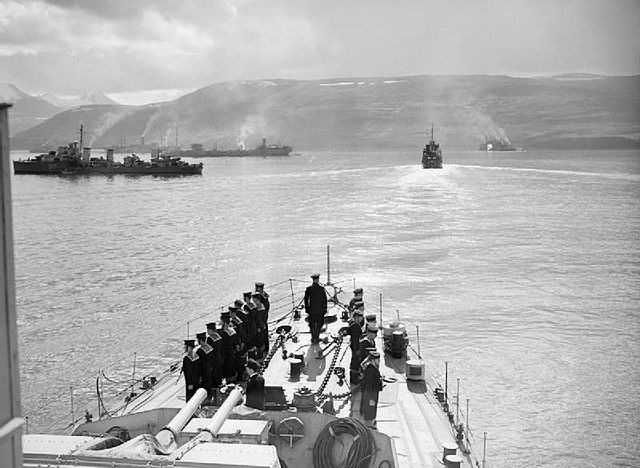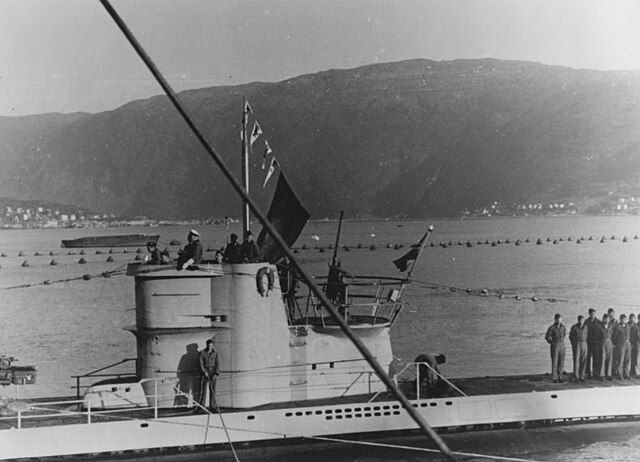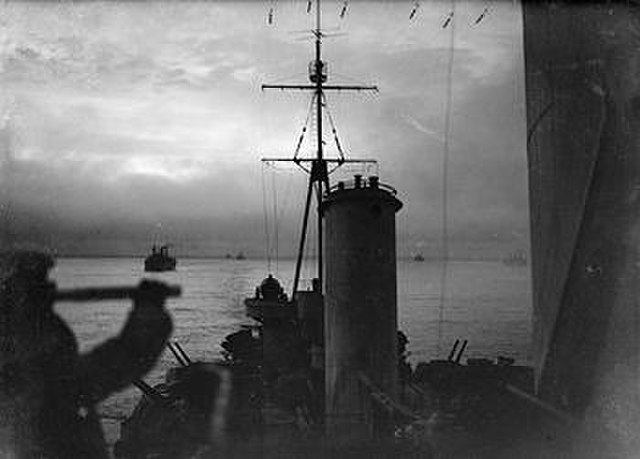PQ 17 was the code name for an Allied Arctic convoy during the Second World War. On 27 June 1942, the ships sailed from Hvalfjörður, Iceland, for the port of Arkhangelsk in the Soviet Union. The convoy was located by German forces on 1 July, after which it was shadowed continuously and attacked. The First Sea Lord Admiral Dudley Pound, acting on information that German ships, including the German battleship Tirpitz, were moving to intercept, ordered the covering force based on the Allied battleships HMS Duke of York and USS Washington away from the convoy and told the convoy to scatter. Because of vacillation by Oberkommando der Wehrmacht, the Tirpitz raid never materialised. The convoy was the first large joint Anglo-American naval operation under British command; in Churchill's view this encouraged a more careful approach to fleet movements.
Escorts and merchant ships at Hvalfjord May 1942 before the sailing of Convoy PQ 17.
U-255 after the attacks on PQ 17, flying four victory pennants and the captured flag of the merchant ship SS Paulus Potter
Arctic convoys of World War II
The Arctic convoys of World War II were oceangoing convoys which sailed from the United Kingdom, Iceland, and North America to northern ports in the Soviet Union – primarily Arkhangelsk (Archangel) and Murmansk in Russia. There were 78 convoys between August 1941 and May 1945, sailing via several seas of the Atlantic and Arctic oceans, with periods with no sailings during several months in 1942, and in the summers of 1943 and 1944.
View from the cruiser HMS Sheffield as she sails on convoy duty through the waters of the Arctic Ocean. In the background are merchant ships of the convoy.
Ice forms on a 20-inch (51 cm) signal projector on the cruiser HMS Sheffield, part of an escort of an Arctic convoy to the Soviet Union.
Routes of the northern allied convoys. 1941-1945
A British wartime poster about the Arctic convoys






